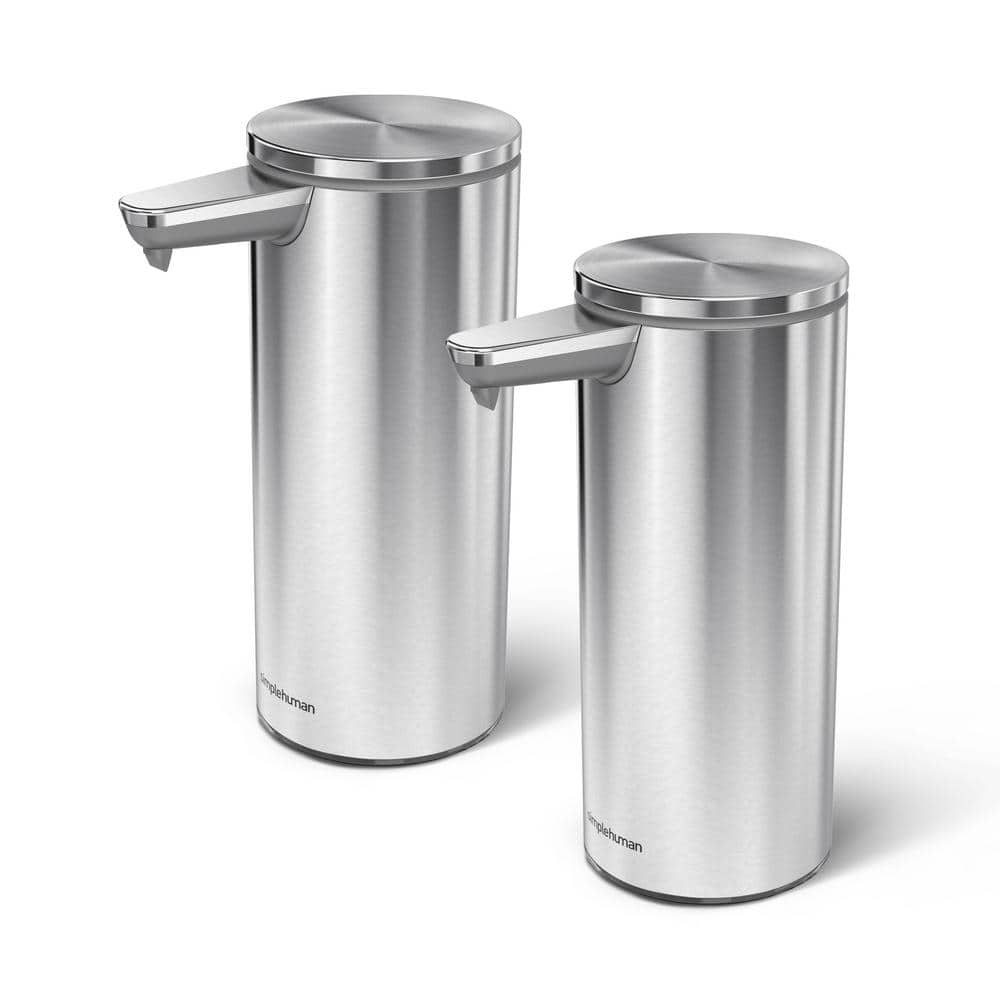simplehuman Rechargeable Sensor Pump for Liquid Soap and Hand Sanitizer in Brushed Stainless Steel, 2-Pack
Made from premium-quality stainless steel for lasting durability. Rechargeable design allows for convenient use. Features a clog-proof tubing pump for smooth soap dispensing.
2 PACK: The simplehuman sensor pump is the most efficient way to wash your hands – no germs or smudges left behind. It has a clog-proof tubing pump that ensures a precise and consistent flow, and the silicone valve prevents messy drips. To control the amount of soap desired, you can position your hand up close to the sensor for a little soap and farther away for more. A funnel refill opening makes refills fast and easy, and it’s waterproof for easy cleaning. It recharges with the included charging puck – one charge lasts up to 3 months. Use simplehuman soap for optimum pump performance.
- Touch-free – neat, easy and automatic, touch-free operation means no germs passed on, and no smudges left behind
- Clog-proof tubing pump – for precise and consistent soap flow
- Funnel refill opening – makes it easy to refill your sensor pump without messy drips
- Variable dispense – position your hand up close for a little soap and farther away for more
- No-drip valve – flexible silicone valve snaps shut to create a seal preventing messy drips
- Look, no batteries – recharge plug on the back is easy to access, and one charge lasts up to 3 months
- Waterproof for easy cleaning – with an IP67 rating, you can rinse the pump in the sink to keep it clean.
- Perfect for hand sanitizer – this soap pump can also be used with hand sanitizer as well as soap
Additional information
| Dimensions | H 6.8 in, W 2.8 in, D 4.4 in |
|---|---|
| Manufacturer Warranty | 2 year warranty |






Reviews
There are no reviews yet.